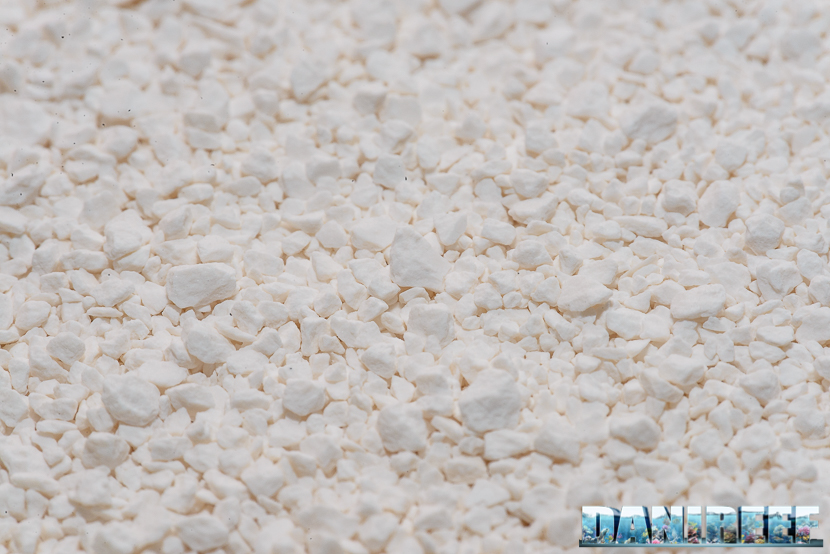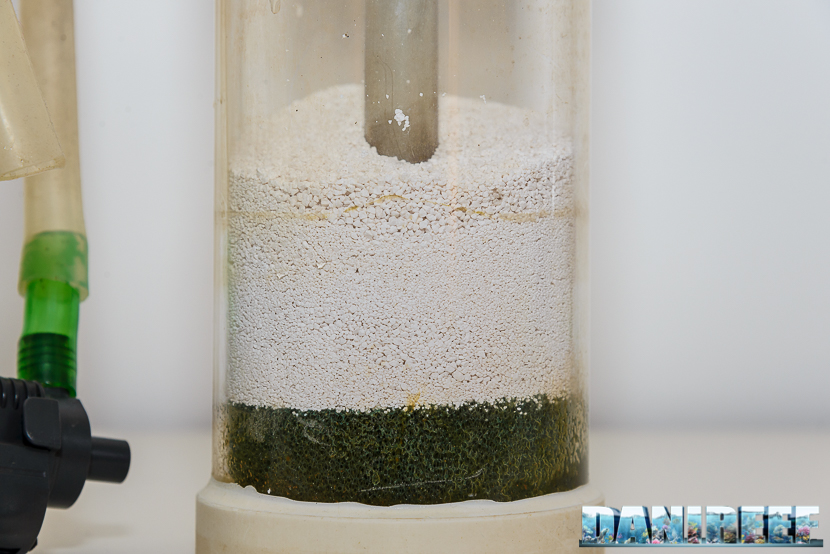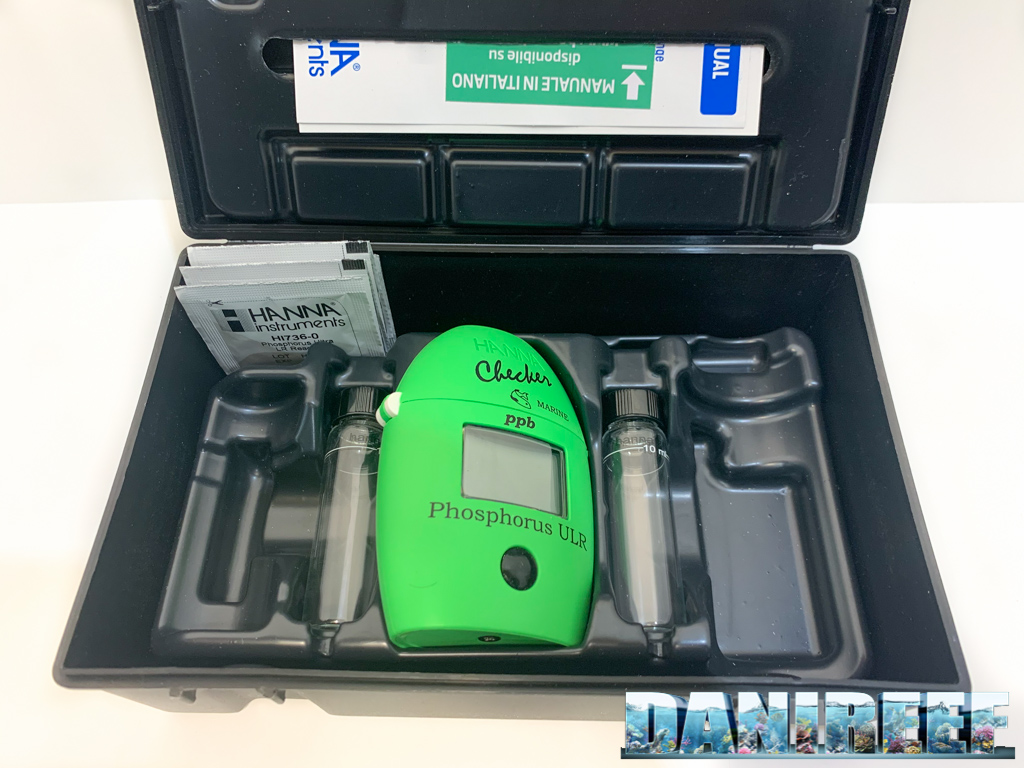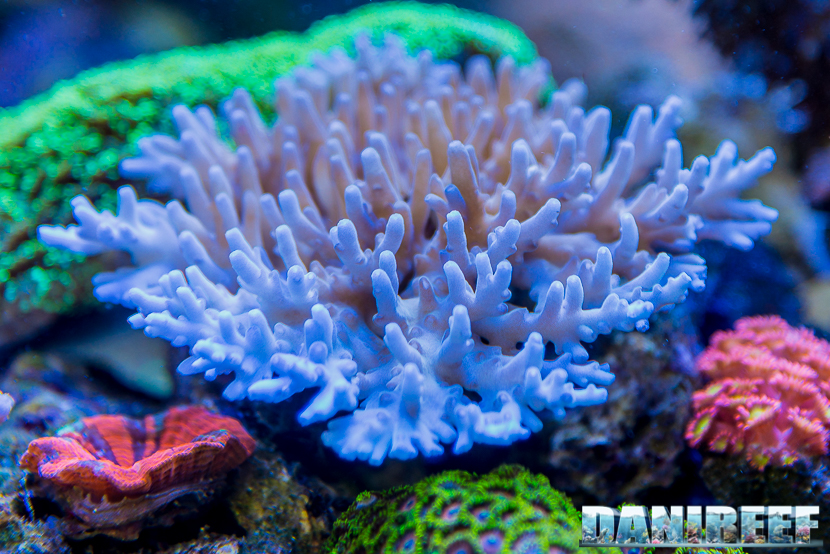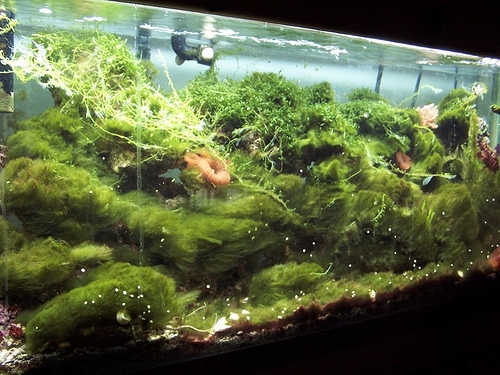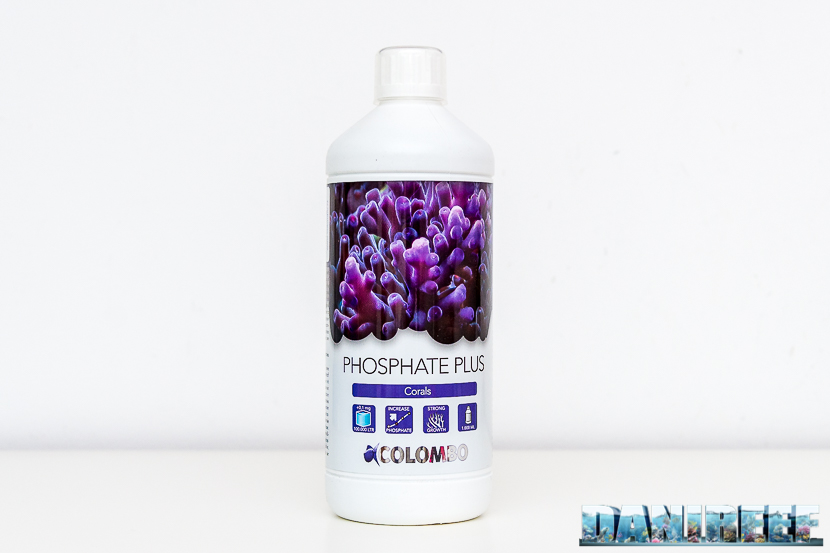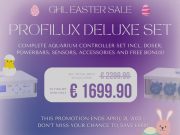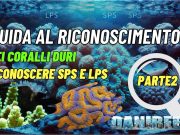Our test
We tested Remover Po4 & SiO2 in a small/medium size tank (approximately 230 litres) with a starting phosphate value measured of 0.5 mg/l with newly bought Salifert tests: this resembles the situation described in the product instruction.
Unfortunately we couldn’t test its effectiveness in the removal of silicates as the tank was already at a 0 value.
We based our test on the instructions given by the manufacturer: 100 grams of product for the treatment of 100-200 liters for a freshwater or marine tank with a starting value of 1 mg/l PO4. Based on their estimates, this quantity of product should bring the phosphate value down to the wanted value of 0.01-0.02 ppm in one week only. Once the phosphate value is down to the minimum level we should replace the media with fresh ones, to allow it to remove silicates, the latter, in fact, start to be removed only when the phosphate level is close to zero. After this initial procedure, the media should be replace periodically just to maintain the values.
We put the media in its bag and rinsed it in osmosis water to remove any possible residual dust.
Note: Aluminum oxide causes a chemical reaction when in contact with water which releases heat. It is not dangerous but important to keep in mind, it is also well explained in the instructions.
Equo pays a great deal of attention to its customers by making available online the data sheets for all its products on their website.
Data sheets contain summarized information about the product, health & safety information, first aid instructions, anti-fire precautions and how to dispose of it. All of it meeting the national and European regulations on chemicals, which I think is proof of reliability and of high production standards and certificates.
As we said, after tightening the media bag and placing it under a strong flow we noticed the complete absence of dust… a real surprise compared to the dust produced by the iron hydroxide!
We then waited the long seven days required, keeping our usual maintenance and feeding routine for fish and corals.
Before the removal we took a new measurement. Unfortunately the phosphate value wasn’t much lower from the one measured seven days earlier, leaving us puzzled about the efficiency of the product if used this way.
Using in a Fluidized Bed Filter
We decided to try the resin in a fluidized bed filter, increasing the amount to maximize its efficiency.
We started with a critical phosphate level higher than 0.5 mg/l. After a week the test results were finally in line with our expectations, near 0.
The animals didn’t show any stress behavior while using this product, on the contrary they really benefited from the phosphate reduction (after a couple of days my Catalaphyllia seemed to explode and after two weeks all SPS corals started growing again and showed more intense coloration).
I personally tried many iron hydroxide based resins in the past, but I rarely achieved such impressive results in such a short time.
Still, they achieve optimal performance only if used in a fluidized bed filter, even though they are not specifically meant for this use. Moreover, the dosage given in the instruction leaflet are probably good for a freshwater aquarium, while they seem an underestimate for marine tanks. For this reason we advise you to buy the bigger packages and to dose the product considering the characteristics of your tank.
Prices
Prices are more or less in line with similar high quality products, while is considerably lower when compare to other iron hydroxide based products.
RRP in euros are as follows:
- € 16,7 for 100 g, that is 167 € al kg;
- € 26,4 for 250 g, that is 105,6 € al kg;
- € 37,3 for 500 g, that is 74,6 € al kg;
- € 52,7 for 1 kg;
- € 158,6 for 5 kg, that is 31,7 € al kg.
As usual bigger packages are much more convenient. Anyway you can find these products at prices 10-15% lower depending on the shop.







